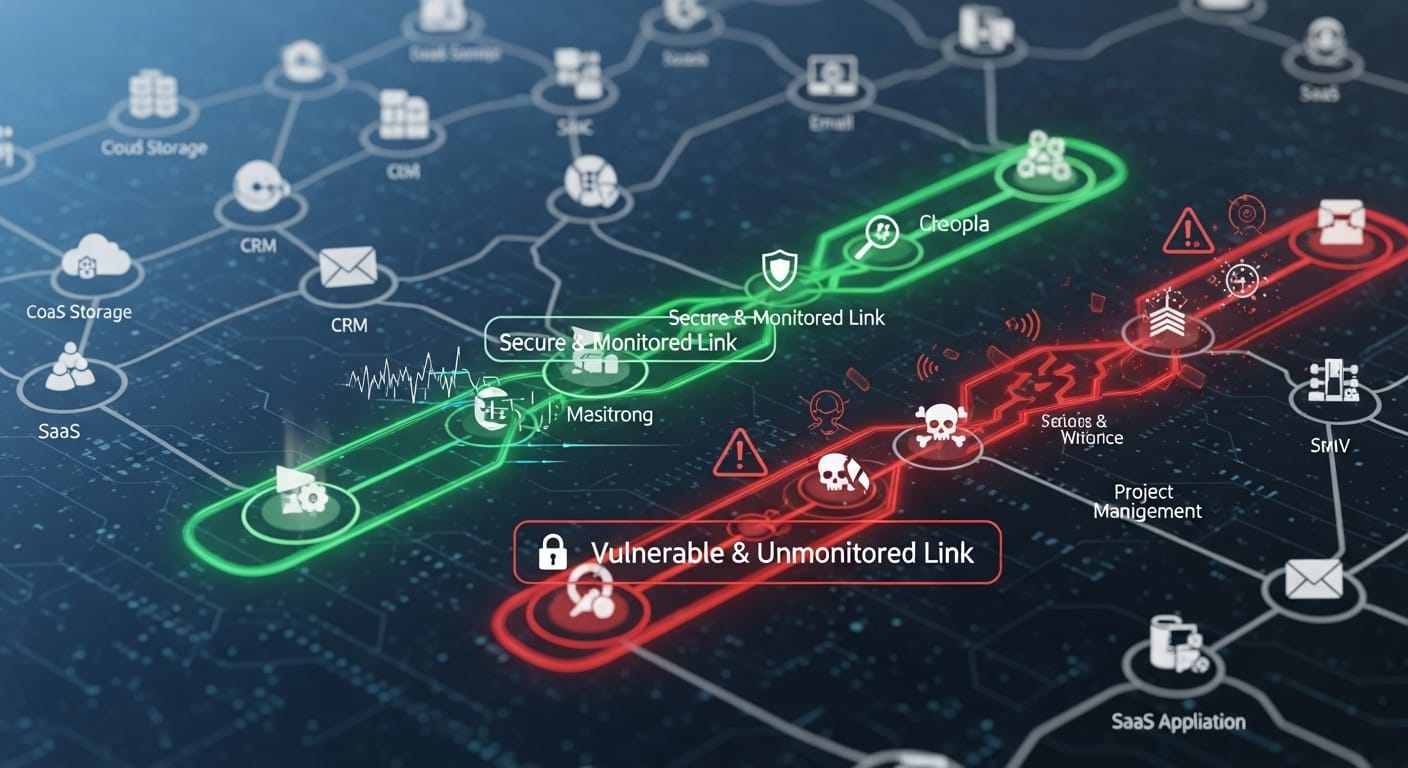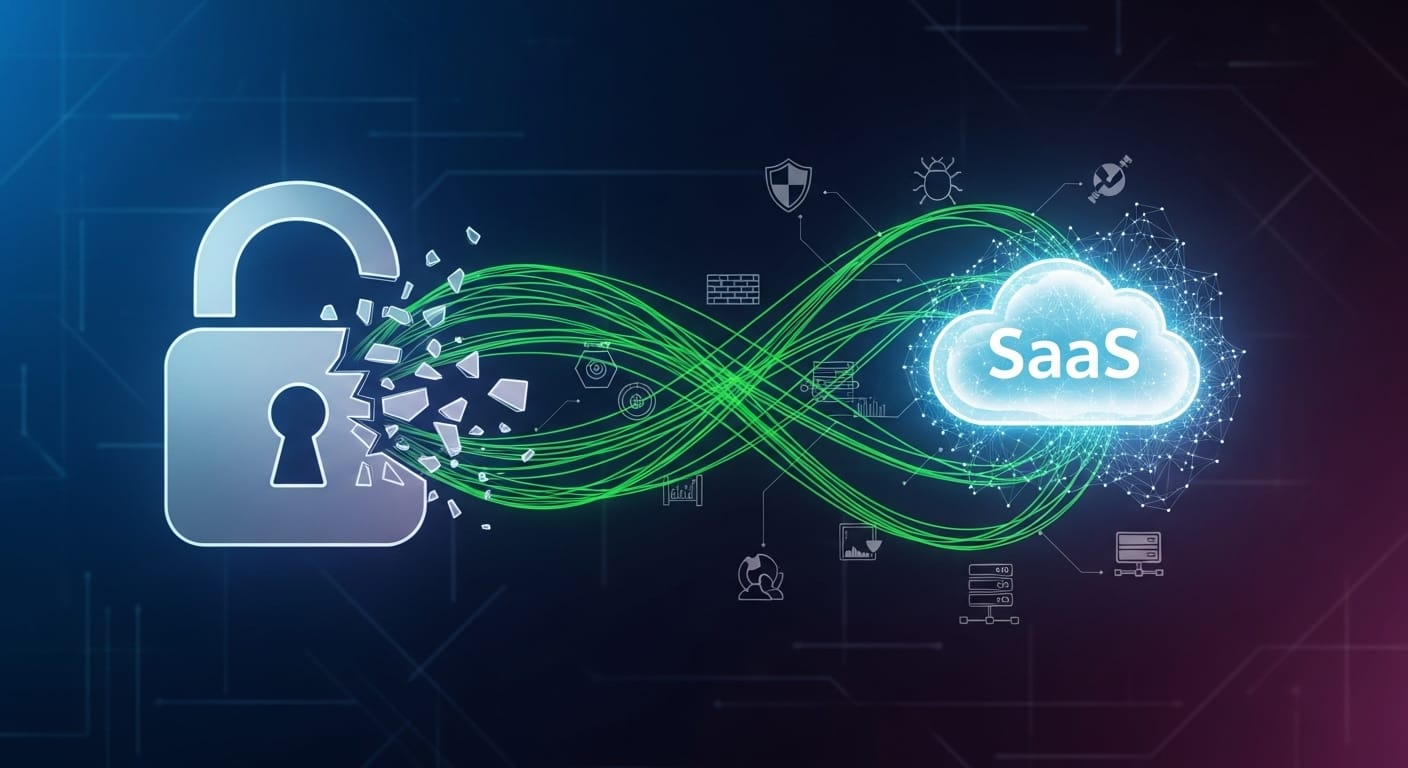The digital landscape thrives on interconnectedness. Software as a Service (SaaS) applications, designed for efficiency and collaboration, often integrate with countless other platforms, creating a complex ecosystem. While this interconnectedness offers immense benefits, it also introduces significant security vulnerabilities. The recent Salesloft incident serves as a stark reminder of these inherent risks, particularly concerning third-party breaches and the critical need for robust SaaS security.
The Salesloft Incident: A Deep Dive into a Supply Chain Attack
In August 2025, the sales engagement platform Salesloft became central to a widespread data theft campaign. The breach, attributed to a threat actor tracked as UNC6395 (also known as GRUB1 by Cloudflare), exploited compromised OAuth tokens associated with Salesloft’s Drift AI chat agent, which Salesloft acquired in 2024.
The attack unfolded between August 8 and at least August 18, 2025, where the threat actor systematically targeted Salesforce customer instances. By stealing OAuth and refresh tokens, the attackers effectively bypassed traditional authentication mechanisms, gaining unauthorized access to numerous corporate Salesforce environments. This method allowed them to exfiltrate vast amounts of sensitive data.

What Data Was Exposed?
The exfiltrated data was extensive and varied, impacting hundreds of organizations globally. Reports indicated the compromise of standard customer relationship management fields in Salesforce, including customer contact information and basic support case data. More critically, the breach exposed potentially sensitive credentials such as Amazon Web Services (AWS) access keys, passwords, and Snowflake-related access tokens. For instance, Cloudflare, one of the impacted companies, revealed that 104 internal API tokens were exposed through support case notes within their Salesforce instance.
The Ripple Effect: Prominent Victims and Industry Response
The nature of this supply chain attack meant that the compromise of a single third-party application—Salesloft Drift—had far-reaching consequences across its customer base. High-profile technology and security vendors, including Cloudflare, Zscaler, Palo Alto Networks, and PagerDuty, publicly confirmed they were affected. This incident underscored the critical vulnerability introduced by third-party integrations, where the security posture of an entire ecosystem can depend on its weakest link.
In response, Salesloft identified the security issue in the Drift application and promptly revoked connections between Drift and Salesforce. Salesforce also temporarily removed the Drift application from its AppExchange. Salesloft further decided to take the Drift platform offline for a comprehensive review to enhance its resilience.
Lessons Learned: Strengthening SaaS Security in an Interconnected World
The Salesloft incident serves as a crucial wake-up call for every organization leveraging SaaS solutions. Several key lessons emerge from this sophisticated supply chain attack:
- Third-Party Risk Management is Paramount: Every integration expands the attack surface. Businesses must rigorously assess and continuously monitor the security posture of all third-party vendors and applications.
- Treat OAuth Tokens Like Passwords: OAuth tokens grant significant access and, if compromised, can be as dangerous as stolen passwords. Organizations need mechanisms for aggressive token rotation, scope minimization (least privilege), and secure storage. This is particularly relevant as AI innovations transforming digital marketing increasingly rely on interconnected SaaS platforms.
- Embrace the Shared Responsibility Model: While SaaS providers are responsible for their infrastructure, customers bear the responsibility for enforcing strong security configurations within their environments, including multi-factor authentication (MFA), privilege management, and secure data practices.
- Implement Proactive Monitoring and Zero Trust: Continuous monitoring for anomalous API calls and user behavior is essential for early threat detection. Adopting a Zero Trust framework, where every access attempt is verified regardless of origin, extends security to internal and SaaS applications alike. Explore how Agentic AI can aid in proactive problem-solving for security.
- Educate Against Sensitive Information Sharing: Organizations must educate employees, particularly support staff, about the dangers of sharing sensitive information like access tokens or passwords in support tickets or unencrypted communications.

Moving Forward: A Call for Resilient SaaS Ecosystems
The Salesloft incident underscores that in today’s interconnected SaaS ecosystem, a breach in one component can cascade, affecting many. Organizations must move beyond traditional perimeter security and adopt a holistic approach that accounts for the entire digital supply chain. This includes thorough vendor assessments, robust identity and access management, continuous threat monitoring, and rapid incident response capabilities. For businesses seeking to navigate these complex security challenges and build resilient digital strategies, our expertise in cutting-edge AI solutions, content marketing strategies, and technology consulting offers a pathway to innovate and grow securely.
Frequently Asked Questions
The Salesloft incident involved a widespread data theft campaign in August 2025, where a threat actor exploited compromised OAuth tokens from Salesloft’s Drift AI chat agent to gain unauthorized access to hundreds of customer Salesforce instances and exfiltrate sensitive data.
The exposed data included customer contact information, basic support case data, account records, and potentially sensitive credentials such as AWS access keys, passwords, and Snowflake-related access tokens.
Organizations can enhance their protection by rigorously assessing third-party vendors, implementing aggressive OAuth token rotation and scope minimization, embracing the shared responsibility model, adopting Zero Trust principles, and educating employees against sharing sensitive information in insecure channels.
Hundreds of organizations were impacted, including prominent technology and security firms such as Cloudflare, Zscaler, Palo Alto Networks, and PagerDuty.


Permalink
Permalink